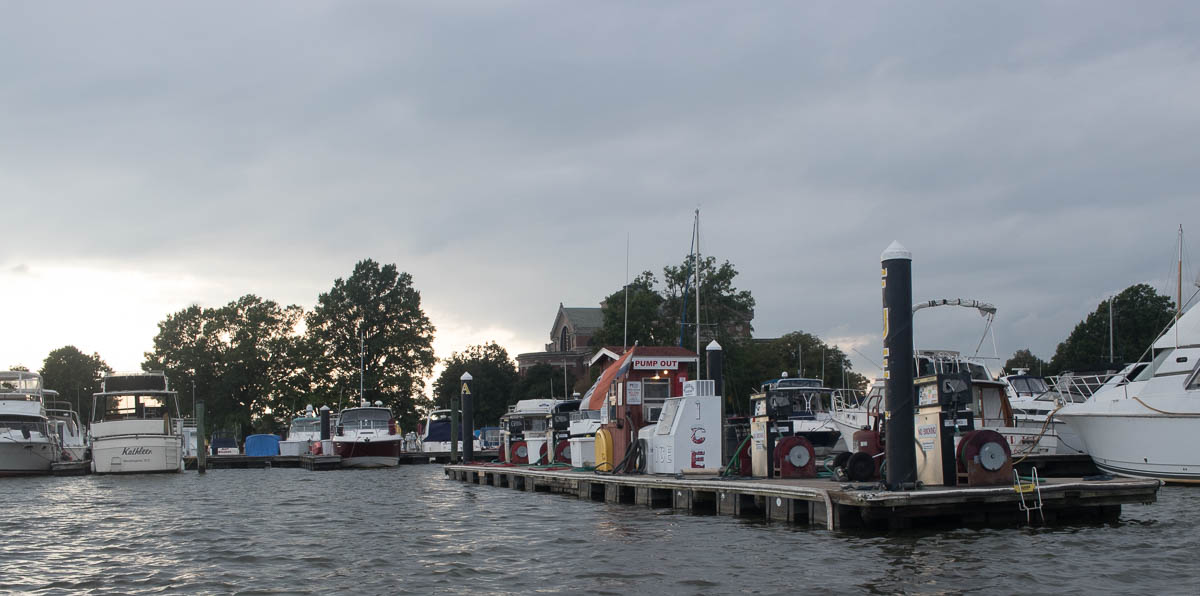Data visualization
GDES-270 fall 2019 (David Ramos, American University Design)
ramos@american.edu · office hours

This semester, we’ll look at how the climate crisis will affect D.C., examining scenarios for summertime high temperatures, coastal flooding, and a data source of your own choice.
Dataset 1: High tide flooding
Last week, the Potomac River’s waters washed over the seawall near the Lincoln Memorial and flooded streets in Alexandria, driven by the position of the moon and Tropical Storm Melissa offshore. (Capital Weather Gang has more, with photos.)
In 2018, D.C. saw 22 days of flooding at high tide. These sorts of coastal flooding events will become ever more common as the climate warms. Under the most likely climate scenario, the District will see high tide flooding from 166–294 days/year in 2050. Areas at risk from storm surges and heavy rainfall are even larger—a DC DOEE map of flood risks shows the Potomac and Anacostia riverfronts, plus the National Mall, underwater in the worst-case hurricanes.
You can view a Workbench workflow set up to reformat and plot these data. You can download the source data below, in the data section of this document.
Dataset 2: Hot summer days
The District, like other major cities, has embarked on a process of planning for the climate emergency. The planning documents note that soaring summertime temperatures will mark a particular hazard. Heat waves present threats to the health of D.C. residents, especially seniors, and young children, and people with existing medical conditions. The city averages 11 days over 95°F, but it will see 40–70 days by 2080. You can download the source data below, in the data section of this document.
Dataset 3: Your choice
Add another slice of data that you find relevant. Choose something that expands on the flooding and heat data, putting it in a broader or more personal context. These other pieces could take an array of forms, including:
- A map showing key locations
- Figures about the Metro system, and the flooding threat to it
- A personal reflection, in quantitative form
- Flooding risks in another city
Examples
See information design examples that combine different types or scales of data.
Design + process
For this project, design a document that presents these risks. Show your data in the form of charts, diagrams, maps, or (visually rewarding) tables.
Process
- Read background information—assigned readings on the schedule, and some of the additional material here.
- Look at the data that illuminate that story (we’ll be using Workbench in class, though a spreadsheet or statistical program might also suffice), and plot the data so that you understand them. Think about how you’d like to organize your data.
- Sketch out your final layout, on paper. Decide on the size and position of text and graphical elements.
- Prepare rough visualizations in an analytical tool.
- Bring those rough visualizations into Illustrator and improve their readability and visual clarity.
- Lay out the final document in InDesign or Illustrator. Print and export to PDF.
We will have desk critiques, small-group critiques, and all-class critiques throughout this process. At every stage, if you can imagine two or three alternatives, try all of them.
Format specifications
- Full color or black and white.
- Trim size: 11×17 in. (tabloid) or 10.5×16.5 in (trimmed to allow bleeds), horizontal.
- Present a printed, full-size sheet for final and semifinal critiques, and turn in a PDF.
- Include a headline and a few sentences of introductory text.
- For each element, provide titles, labels, values and descriptions, and notes about sources.
Typefaces
You may only use the fonts listed here. If you use two fonts, it would be prudent to pick a serif and a sans serif.
Commercial fonts
These may or may not be available to you through Adobe Fonts. If a font isn’t available, try another font on this list.
- Adobe Garamond
- Adobe Caslon
- ITC Franklin Gothic, Franklin Gothic URW
- Adobe Garamond, Garamond FB Text, Garamond Premier
- Myriad
Free/open source
Download and install. See Apple documentation on how to install a font on a Mac. You can download a package containing OTF files for all these fonts (ZIP).

Data
Work with temperature and flooding data for D.C. Start by downloading a ZIP file containing data excerpts.
Summer temperatures
The file temperature.csv contains historical and projected temperature averages for Washington, D.C.
They come from a report produced by a consultants who were working for the D.C. Department of
Energy and the Environment:
Hayhoe, Katharine, and Stoner, Anne. “Climate Change Projections For the District of Columbia.” 2015.
Table of summer temperatures
These are data contained in temperature.csv.
| Time period | Summer high | Summer night low | Hot days | Heat index days |
| 1991 to 2010 average | 87 | 66 | 11 | 30 |
| 2020s | 89.5 to 90 | 68.5 to 69 | 19 to 21 | 50 |
| 2050s | 92 to 94 | 71 to 74 | 30 to 45 | 70 to 80 |
| 2080s | 93 to 97 | 72 to 76 | 40 to 70 | 75 to 105 |
About the summer temperature data file
- Summer day high: average summer daytime high temperature, in degrees Farenheit, for three District weather stations.
- Summer night low: average summer nighttime low temperature, in degrees Farenheit, for three District weather stations.
- Hot days: number of days in a year with a temperature over 95°F.
- Hot days: number of days in a year with a heat index over 95°F.
The predicted, future values are a range between high and low scenarios.
Tidal flooding
The file flooding.csv contains high tide flooding data for Washington, D.C. These data are a reformatted extract
from a larger data file (CSV), which accompanied a NOAA report:
Sweet, W.V., G. Dusek, J. Obeysekera, and J. Marra. “Patterns and Projections of High Tide Flooding Along the U.S. Coastline Using a Common Impact Threshold. NOAA Tech. Rep. NOS CO-OPS 86.” 2018.
Again, you can work with a Workbench workflow that reformats and plots these data.
About the flooding data file
The values in this table are the number of days when tides were high enough to cause flooding, per year. (In this report, the historical data stop in 2016; 2018 saw some 22 days of tidal flooding.)
Location: NOAA Tide Gauge 8594900, Washington Channel, Washington, D.C. (The tidal range for this location runs about 2.5–3 ft.)
NaN entries indicate that the station was not in service, or that there were insufficient data.
The named scenarios (“low,” “int_low,” etc.) are the global sea level rise scenarios the U.S. Federal Interagency Sea Level Rise and Coastal Flood Hazard Task Force. Short but oversimplified answer: the intermediate (“int”) or intermediate-high (“int_high”) scenarios are most likely.
Map assets
In case you’d like to work with maps. Presented here in PDF or SVG format. You can edit these files, which are vector graphics, in Illustrator.
- DC Ward Map
- DC Location Map
- DC road maps
- Metro ro scale
- Map of waterbodies in the DC area (PDF), extracted from USGS National Hydrography Dataset. A more complicated file to work with, but detailed. Includes waterbodies coded as marsh, but that produces a reasonable rendering of the Anacostia.
You can find additional maps to edit—look for SVG formatted graphics, freely licensed—Wikimedia Commons is a good starting point.

More information
Sea level rise and climate
- High Tide in Dorchester—a documentary film about the effects of rising seas in Dorchester County, on Maryland’s Eastern Shore. Beautifully shot, with interviewees who speak lovingly about the place they call home. (Watchable in its entirety on Vimeo.)
- Sinking Cities, a PBS miniseries about climate adaptation in Miami, London, Tokyo, and New York
- NOAA Sea Level Rise Viewer
- Climate Central maps and tools for U.S. and internationally
- What Could Disappear—the New York Times maps sea level scenarios across U.S. cities.
- Fourth National Climate Assessment, U.S. Global Change Research Program (see esp. the Coastal chapter)
- Sea Level Rise scenarios at U.S. Climate Resilience Toolkit
- Climate change could cost the U.S. up to 10.5 percent of its GDP by 2100, study finds, Capital Weather Gang, Washington Post
- As Climate Changes, Southern States Will Suffer More Than Others, New York Times
- Weather 2050 (“America is warming fast. See how your city’s weather will be different in just one generation.”) at Vox
Washington, D.C.
- Heat islands in D.C., mapped
- Climate Ready DC: The District of Columbia’s Plan to Adapt to a Changing Climate, D.C. Department of Energy & Environment
- DC Flood Risk Tool, interactive map showing FEMA flood maps, storm surge, and sea level rise, from D.C. DOEE
- With Climate Change, Washington, D.C. Will Feel More Like Arkansas by 2080, Smithsonian
The Anacostia River
- Anacostia Rising, an in-depth WAMU project, covering history, physical features, and environmental and social issues. Accompanied by audio pieces and excellent photos.
- River of Resilience
- Anacostia Riverkeeper
- Anacostia Watershed Society
- Anacostia Watershed basics
- Anacostia River Trails (PDF)—map from National Park Service
- Anacostia River Water Trail Guide (PDF)
- Anacostia Waterfront Trust
- GGWash: A more accessible Anacostia Park would mean a healthier community
CSOs and water quality
- WUSA: 3.8 billion gallons of polluted stormwater stopped from spilling in Anacostia River despite rains
- GGWash: DC’s new tunnel is keeping billions of gallons of sewage out of the Anacostia
- DC Water Clean Rivers Project (CSO prevention/mitigation project)
- DC Water Combined Sewer System
- GGWash: DC’s rivers could be swimable in the next several years